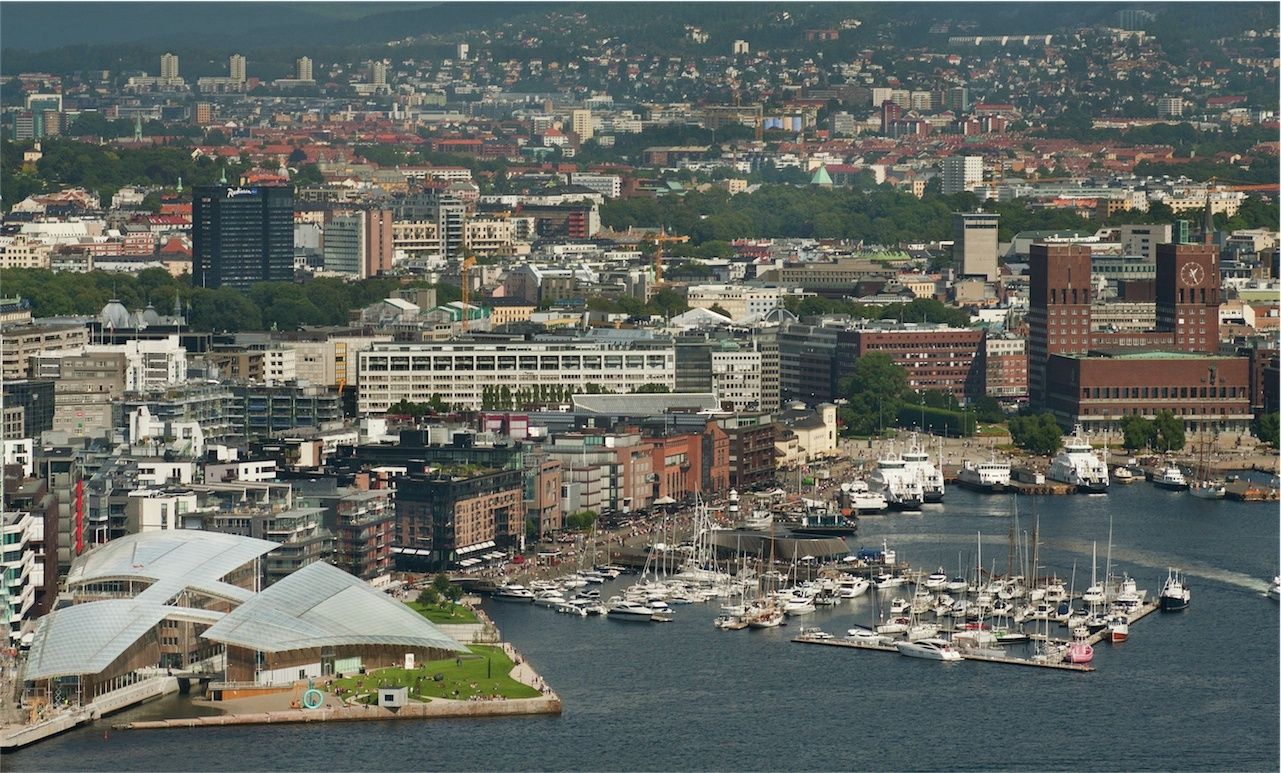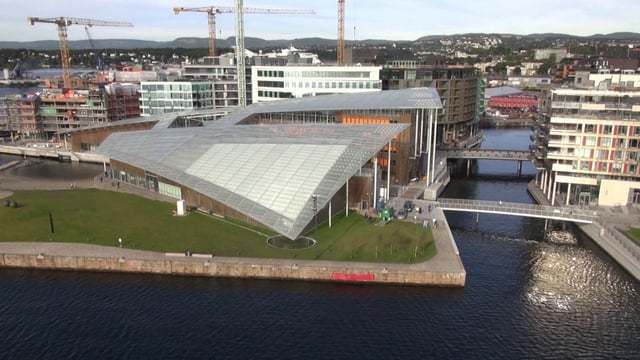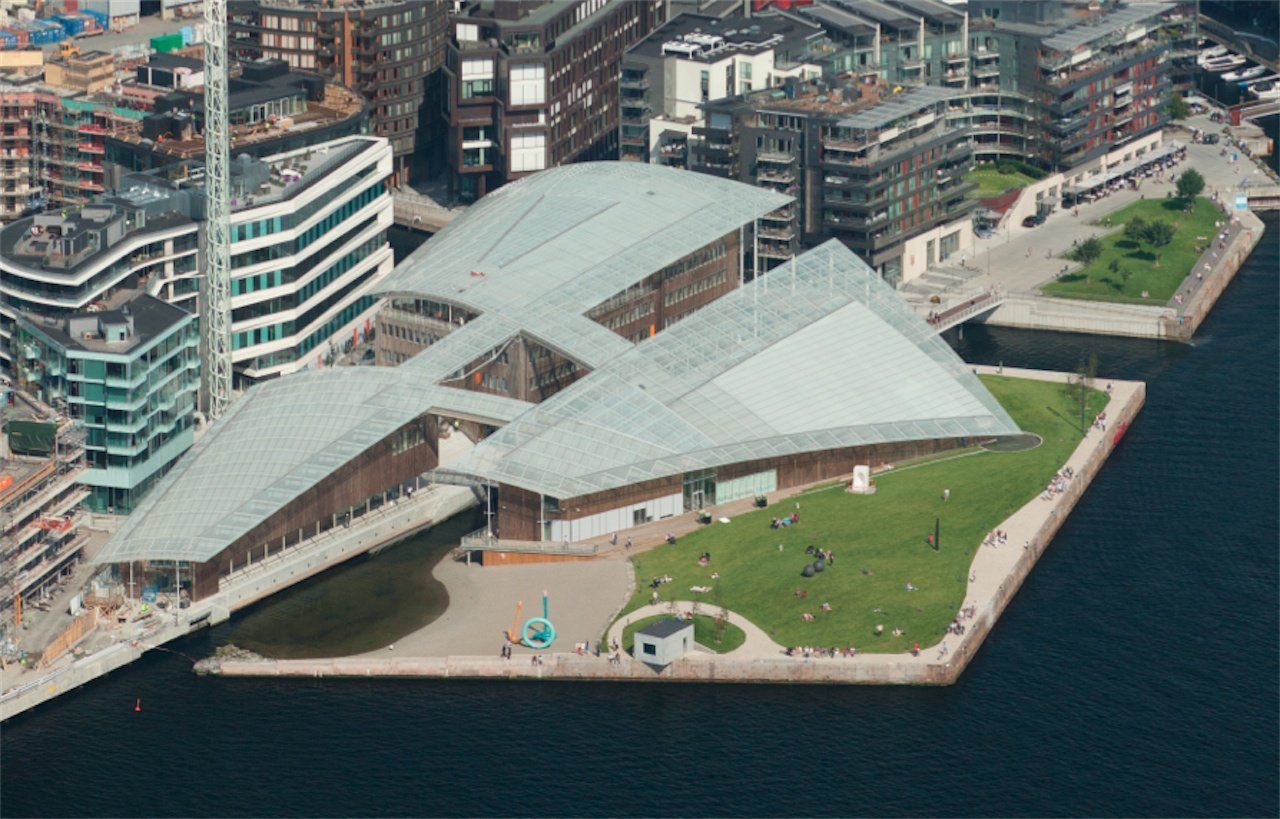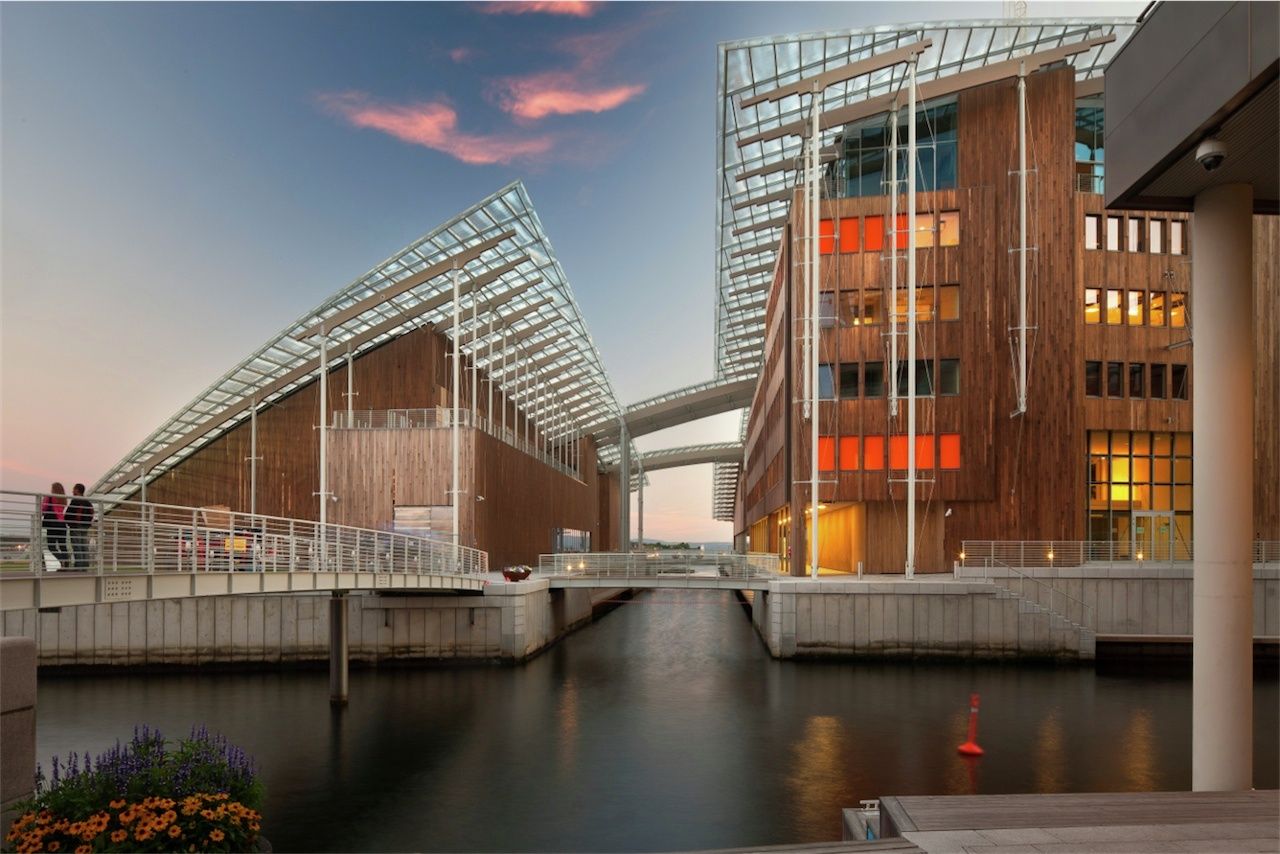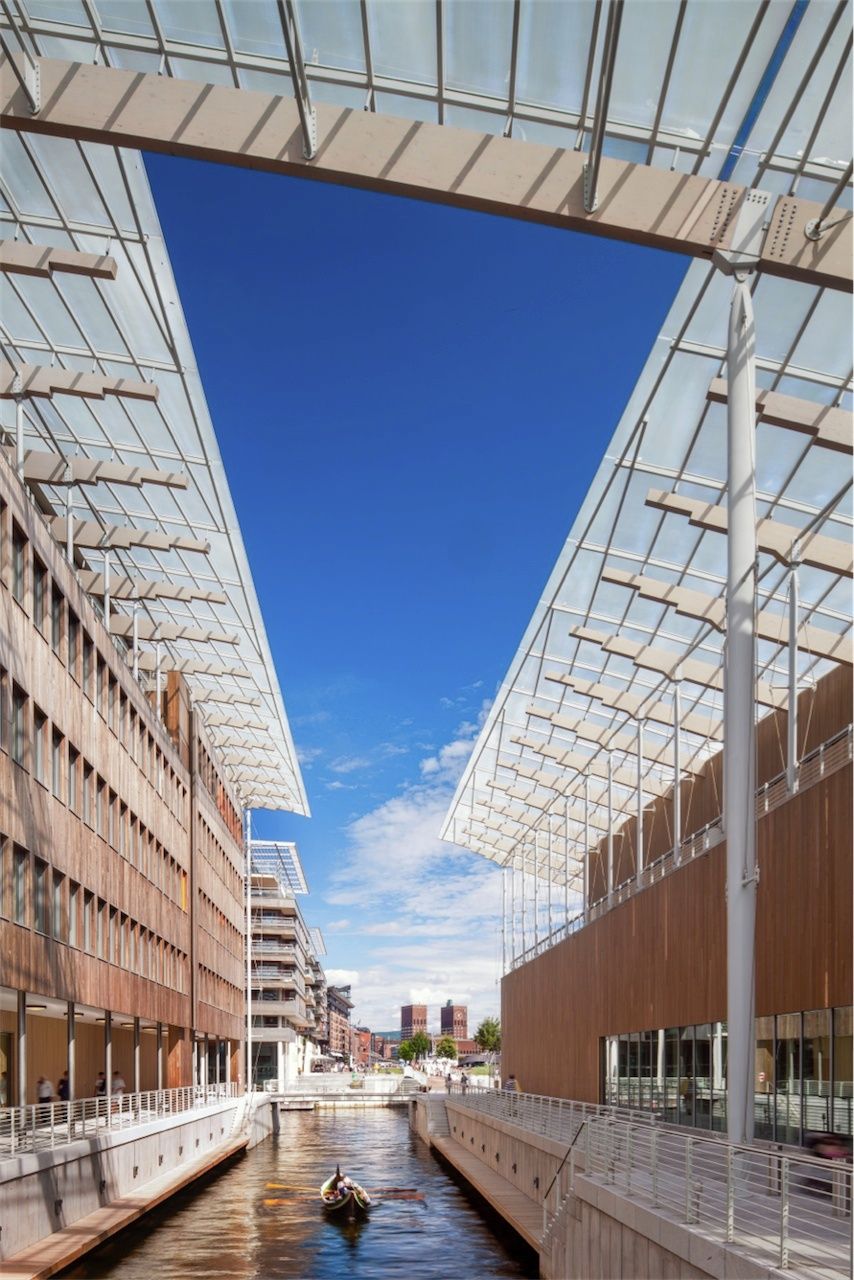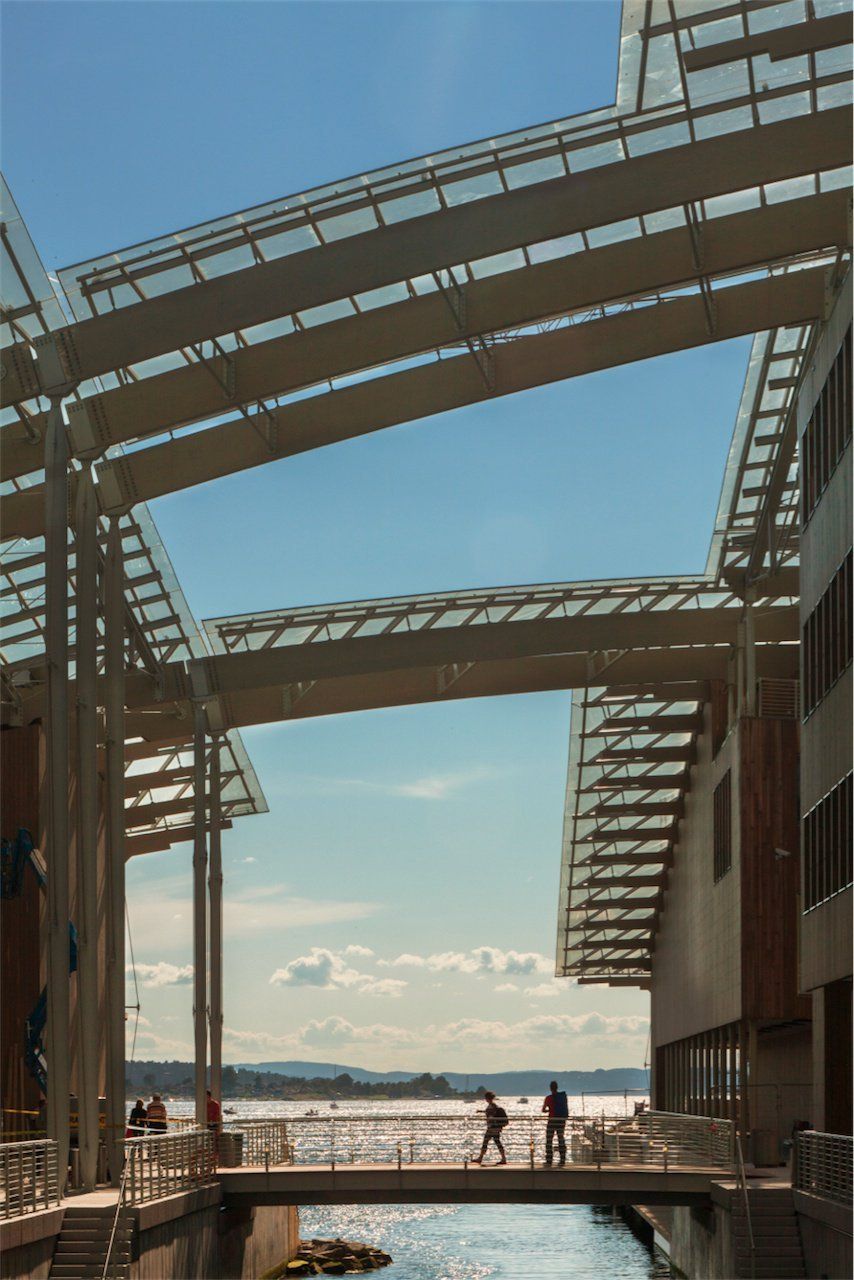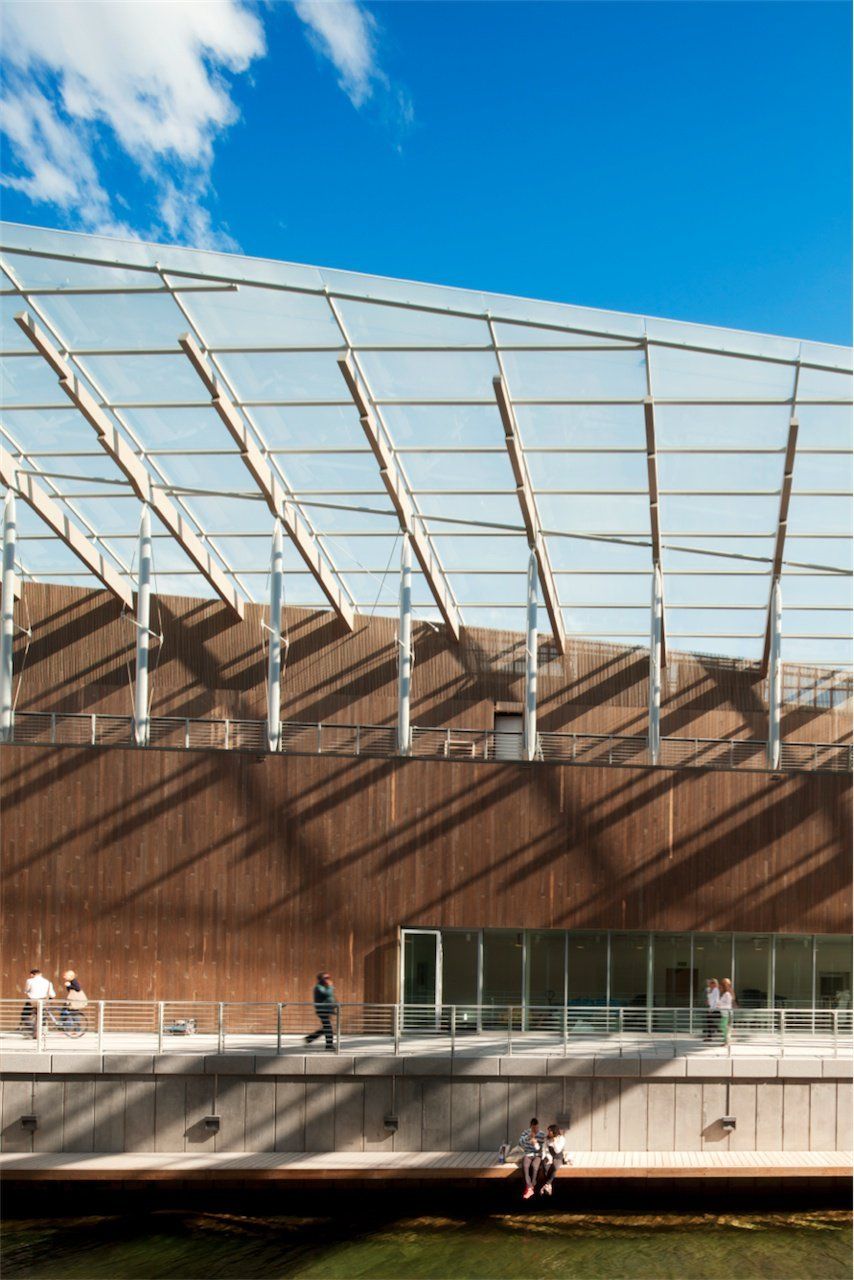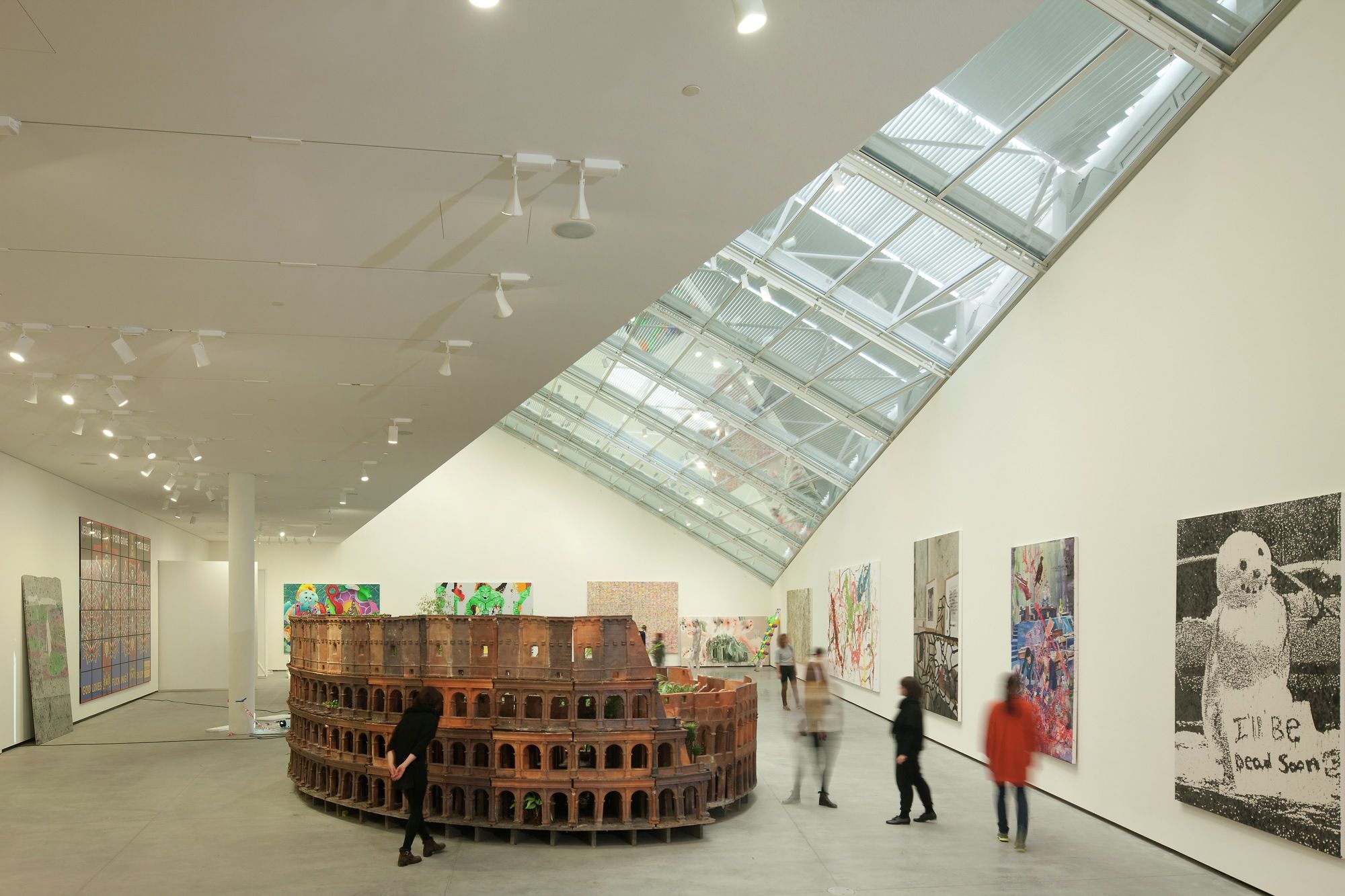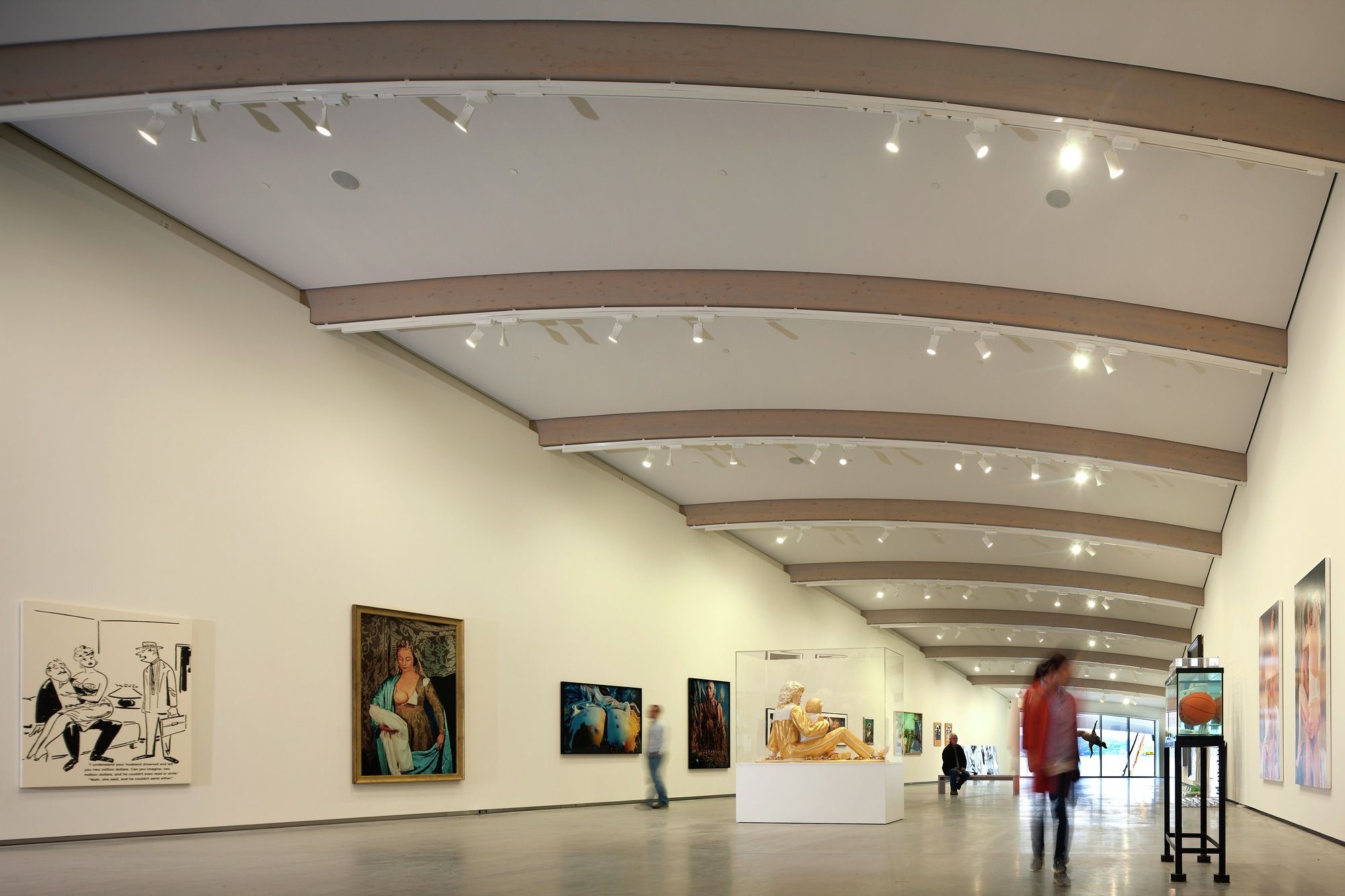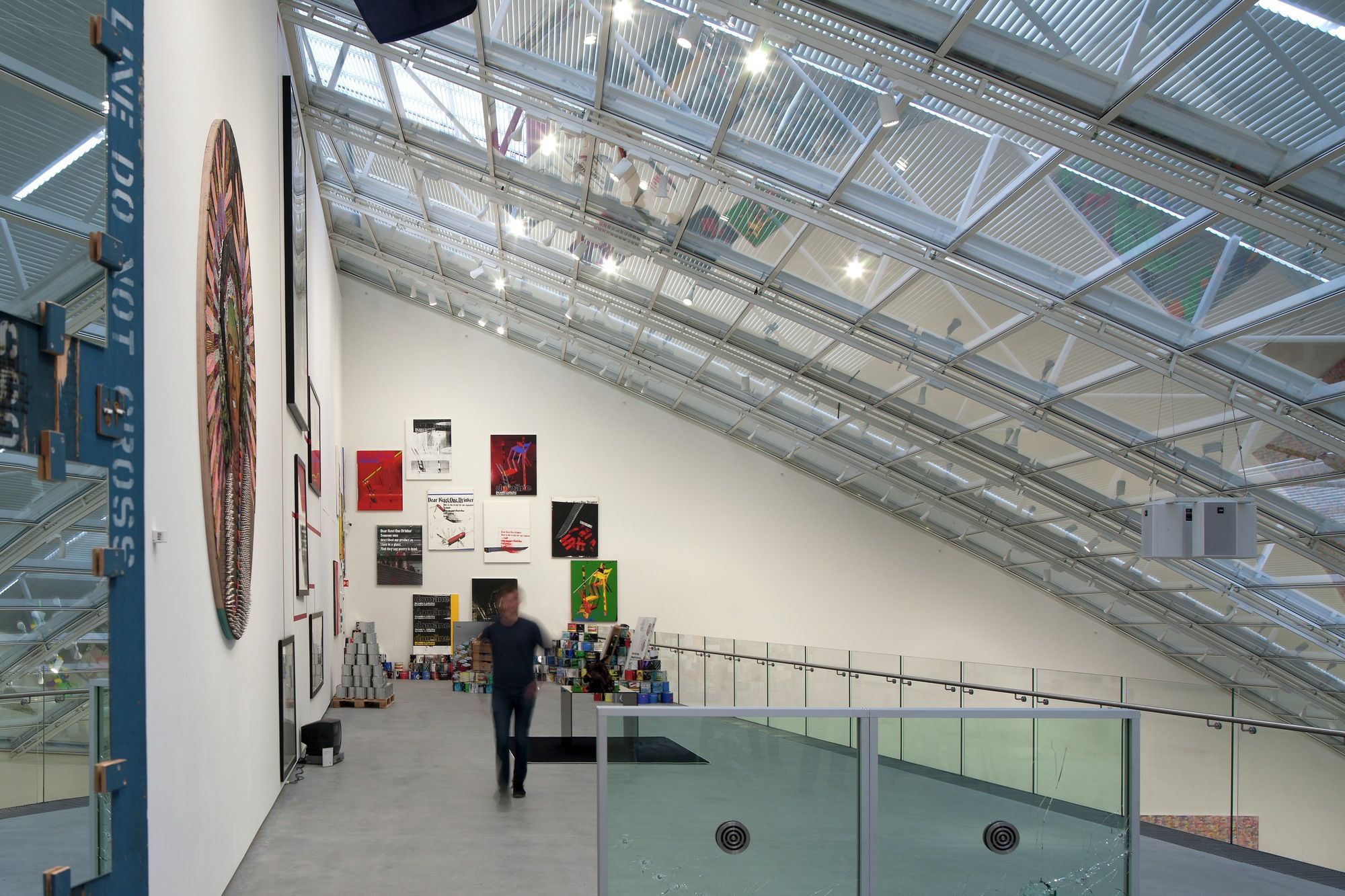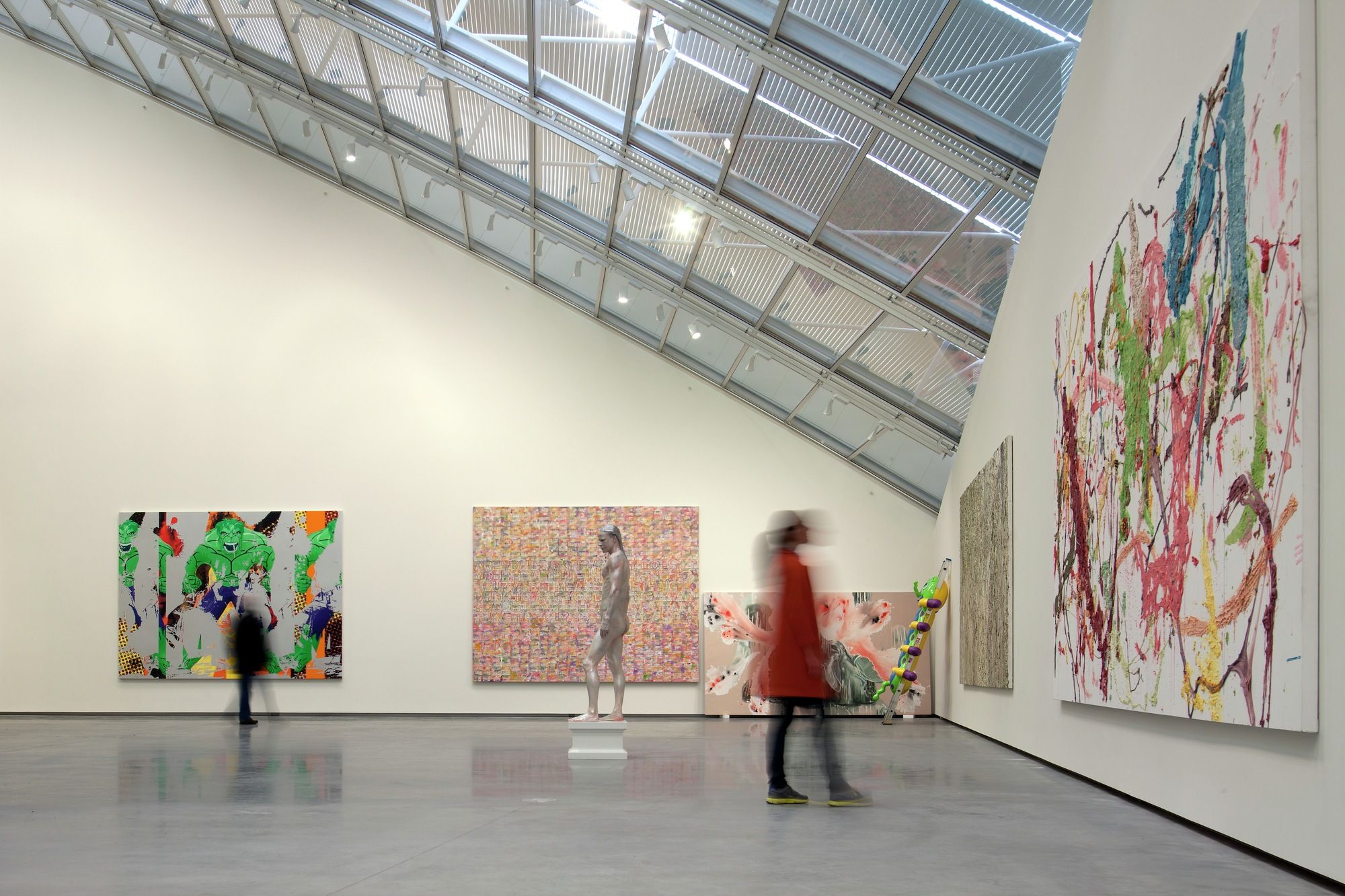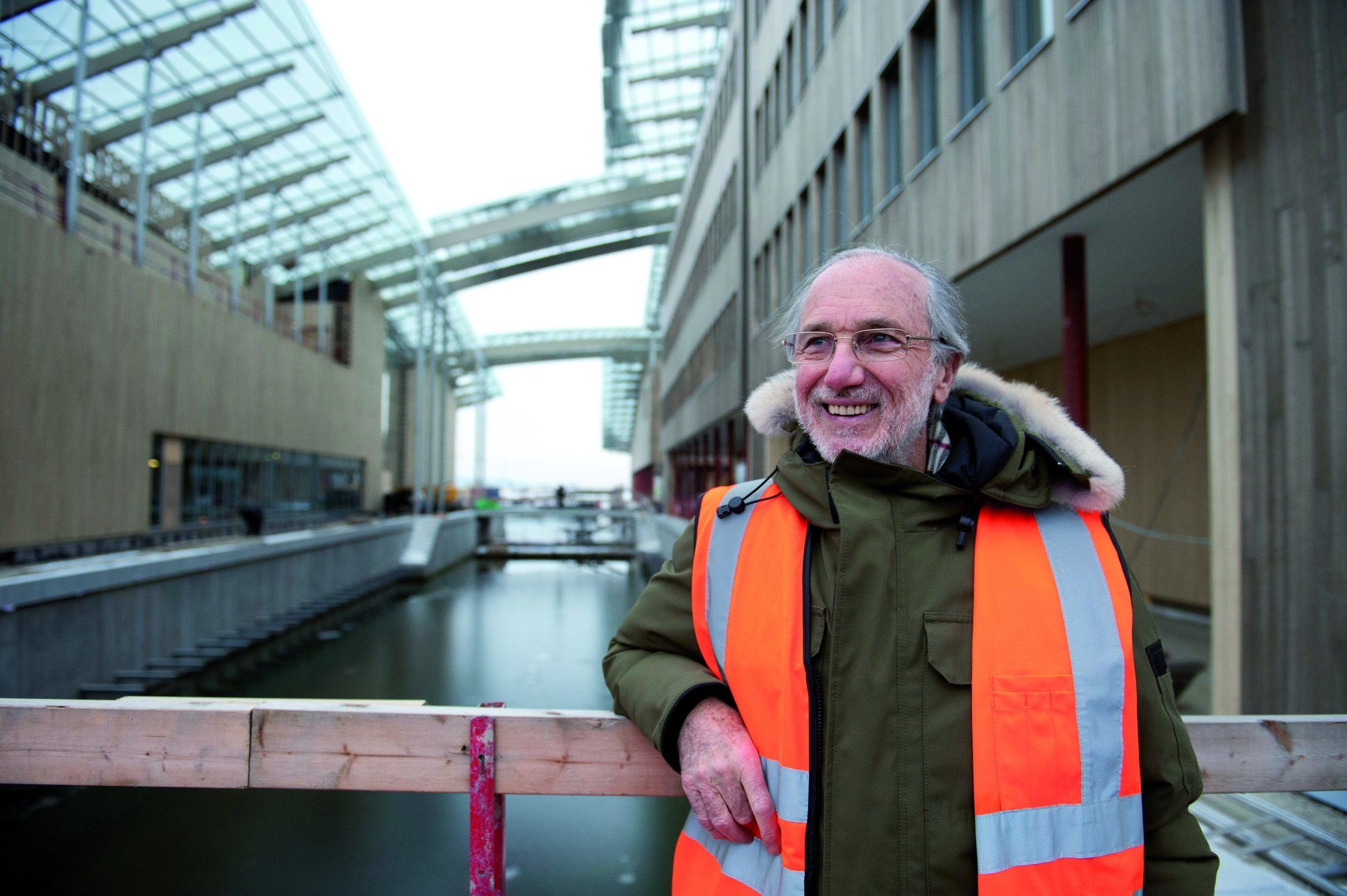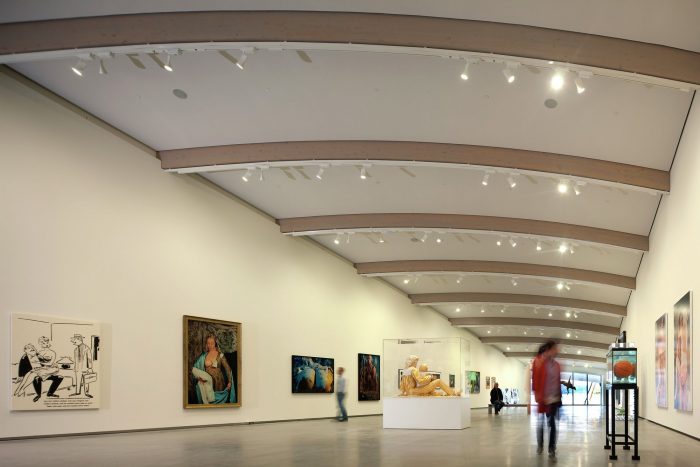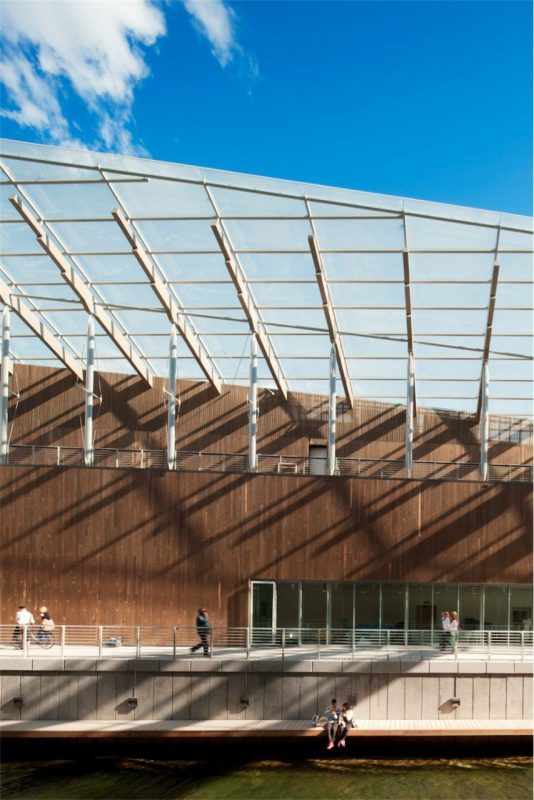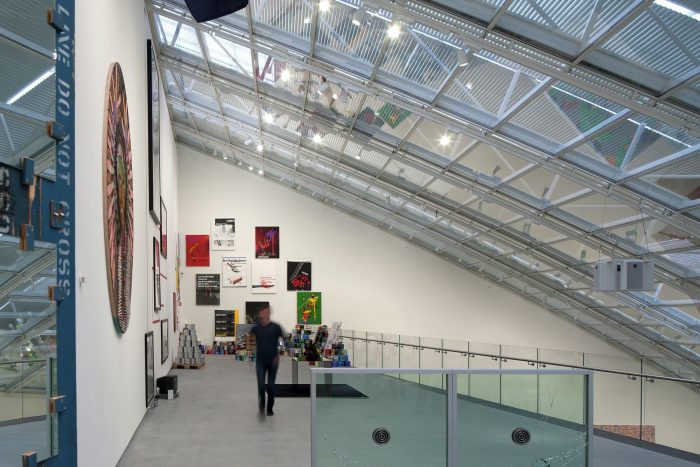Astrup Fearnley Museum of Modern Art
For his first project in Norway, the starachitect Renzo Piano follows on his internationally celebrated style with this Astrup Fearnley Museum of Modern Art. As expected from Piano, the project focused primarily on the unique sectional design, and integrating the building with the surrounding landscape, including the sea, the green spaces, as well the surrounding built blocks. The museum consists of three main spaces; a museum, a separate space for its temporary exhibitions, and an office building with its own exhibition area for a private art collection. The first of the two most distinct features of the project is the daylight illumination of the museum, as the architect explains “The glass on the roof has a white ceramic frit, reducing its transparency by 40%. On the facades, wherever possible, low-iron glass has been used to enhance transparency and to minimise the discoloration of the light into the exhibition spaces.”
The museum consists of three main spaces; a museum, a separate space for its temporary exhibitions, and an office building with its own exhibition area for a private art collection. The first of the two most distinct features of the project is the daylight illumination of the museum, as the architect explains “The glass on the roof has a white ceramic frit, reducing its transparency by 40%. On the facades, wherever possible, low-iron glass has been used to enhance transparency and to minimise the discoloration of the light into the exhibition spaces.”
The workshop has always been recognized and appreciated for its well spent efforts to push the limits of the usage of materials and their development technologies, with sustainability always in mind. The glass roof is kept together by laminated wood beams, and the design of the slabs allows for daylight to penetrate most parts of the complex’s buildings. The other feature that hits the eye right away is the interactive space created by the precise positioning of the three masses creating the complex; allowing for water to slip right into the project with a sea-water canal, and creating a captivating shaded passage alongside the canal and under the glass roof. The architects elaborates “The landscaping of the surroundings was an integral part of the project. A promenade along the waterfront links Tjuvholmen back to the city centre. The cafe, a beach for swimming, and the sculpture park are all designed to attract a diverse range of visitors and create a truly public space.”
The other feature that hits the eye right away is the interactive space created by the precise positioning of the three masses creating the complex; allowing for water to slip right into the project with a sea-water canal, and creating a captivating shaded passage alongside the canal and under the glass roof. The architects elaborates “The landscaping of the surroundings was an integral part of the project. A promenade along the waterfront links Tjuvholmen back to the city centre. The cafe, a beach for swimming, and the sculpture park are all designed to attract a diverse range of visitors and create a truly public space.”
 The Italian architect Renzo Piano is one of the most influential personalities of the field of art and architecture; he was chosen as one of the most 100 influential people in the world by TIME magazine in 2010, appointed Senator for Life by the Italian president in 2013. Additionally, his architectural honors extend to the RIBA’s Gold Medal, AIA’s Gold Medal, and of course, the Pritzker award. His designs are site oriented, and unique for every situation, as he explains “In all our work we aim to address the specific features and potential of a particular situation… We continue to push the limits of building technology – innovating, refining and experimenting – to come up with the very best solution for each situation”.
The Italian architect Renzo Piano is one of the most influential personalities of the field of art and architecture; he was chosen as one of the most 100 influential people in the world by TIME magazine in 2010, appointed Senator for Life by the Italian president in 2013. Additionally, his architectural honors extend to the RIBA’s Gold Medal, AIA’s Gold Medal, and of course, the Pritzker award. His designs are site oriented, and unique for every situation, as he explains “In all our work we aim to address the specific features and potential of a particular situation… We continue to push the limits of building technology – innovating, refining and experimenting – to come up with the very best solution for each situation”.
By: Hazem Raad
Edited by: Zeynab Matar
